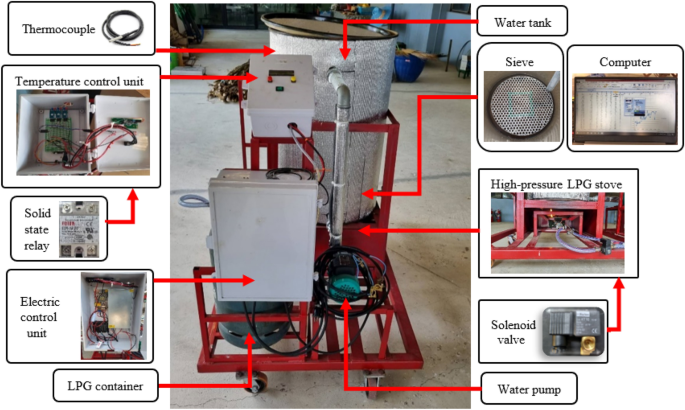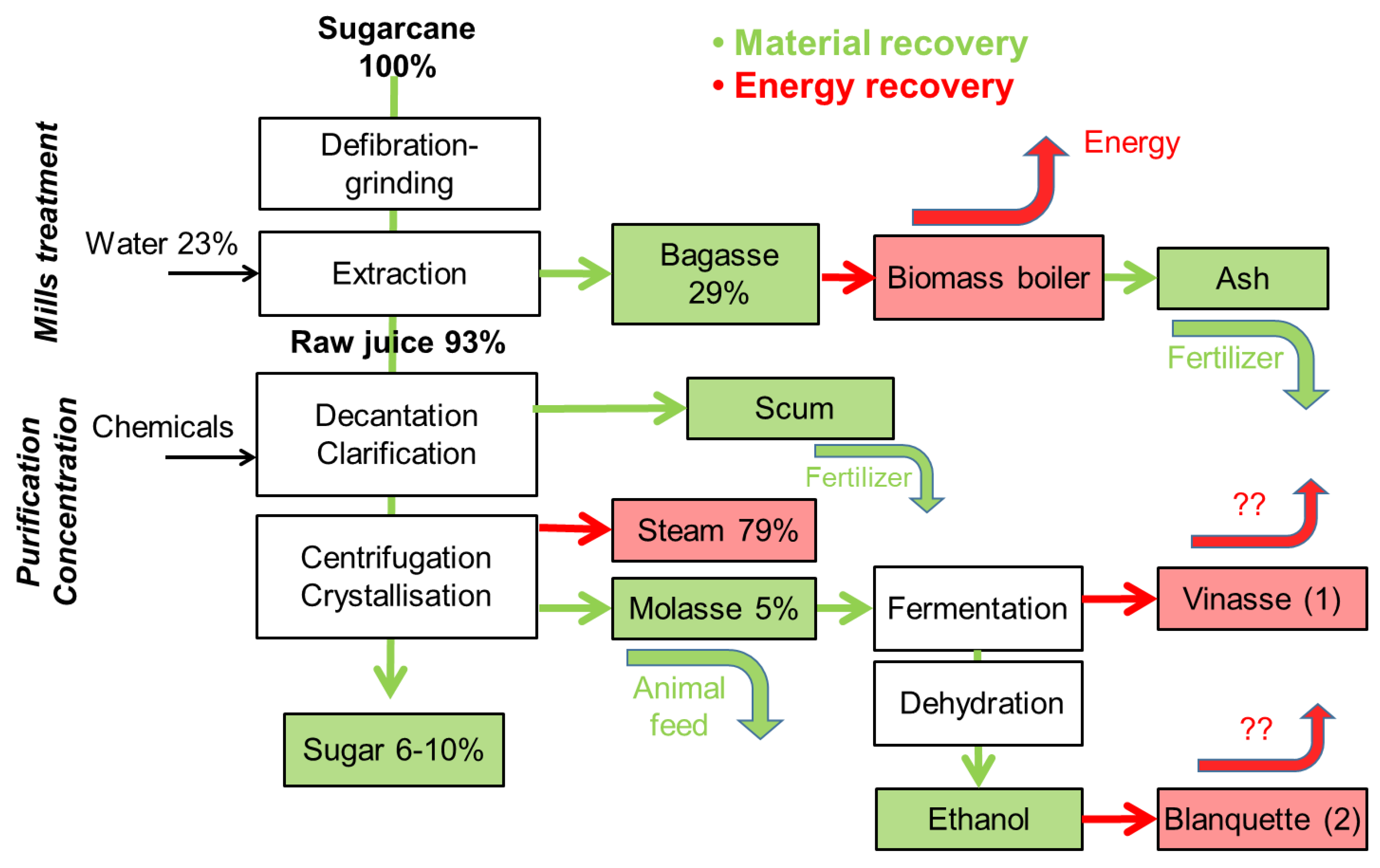The Science Behind Biodegradable Products From Sugarcane
The Science Behind Biodegradable Products From Sugarcane
Blog Article
Discover the Ingenious Benefits of Products From Sugarcane for Sustainable Living
Sugarcane has become a crucial source in the mission for lasting living. Its diverse applications span naturally degradable packaging, sustainable energy, and healthier food choices. As markets seek green options, sugarcane's versatility offers appealing options. Nevertheless, real possibility of sugarcane prolongs past its current usages. Exploring its cutting-edge benefits could disclose brand-new pathways toward a more lasting future. What other opportunities might this remarkable plant hold?

The Rise of Sugarcane as a Lasting Resource
As international awareness of ecological problems expands, sugarcane has actually become a prominent sustainable resource. This functional crop offers a range of benefits that add to environment-friendly methods. Sugarcane is a sustainable source, qualified of prospering in varied climates while absorbing co2, therefore reducing greenhouse gas discharges. Its quick development cycle enables constant harvesting, causing a constant supply of raw material.Additionally, sugarcane growing usually needs much less water compared to various other plants, making it an efficient alternative in water-scarce areas. The spin-offs of sugarcane, such as bagasse and molasses, can be repurposed for numerous applications, lowering waste and promoting circular economy concepts. Additionally, advancements in farming practices have actually resulted in even more lasting farming methods, better enhancing sugarcane's ecological profile. As consumers significantly seek lasting alternatives, sugarcane stands out as a viable alternative for those dedicated to minimizing their eco-friendly impact.
Naturally Degradable Product Packaging Solutions
How can naturally degradable product packaging remedies transform the method consumers approach sustainability? By using sugarcane-based products, these innovative services supply a compelling option to typical plastics. Eco-friendly packaging made from sugarcane decays normally, significantly reducing landfill waste and greenhouse gas discharges. As consumers become significantly familiar with their environmental effect, the need for lasting product packaging remains to rise.These sugarcane-derived products not just offer useful functions but additionally line up with eco-conscious consumer worths. They offer a substantial way for people and organizations to add to a circular economic climate, promoting resource effectiveness and decreasing environmental footprints. Furthermore, as markets adopt biodegradable options, they promote a culture of sustainability that reverberates with a growing group seeking liable choices.In essence, eco-friendly product packaging options from sugarcane represent a crucial progression in sustainable practices, encouraging customers to make environmentally friendly decisions without sacrificing convenience or top quality.
Renewable Resource Generation From Sugarcane
A considerable section of renewable resource generation can be derived from sugarcane, showcasing its adaptability beyond conventional agricultural usages. Sugarcane biomass, consisting of bagasse and leaves, is a potent source for bioenergy production. This biomass can be exchanged biofuels such as ethanol, which acts as a cleaner choice to fossil gas. Furthermore, the combustion of sugarcane by-products creates heavy steam and electrical power, providing an energy source for sugar mills and close-by communities.The farming of sugarcane also adds to carbon sequestration, as the plants soak up carbon dioxide throughout their growth cycle. By utilizing sugarcane for energy, waste is decreased, and sustainable practices are motivated. This renewable resource approach not just sustains energy demands however additionally promotes country advancement, creating tasks in bioenergy markets. Generally, sugarcane stands out as a key gamer in the shift to sustainable energy options, lining up with international efforts to decrease carbon impacts.

Eco-Friendly Textiles and Fabrics
Environment-friendly textiles and textiles derived from sugarcane provide an encouraging choice to conventional products. These biodegradable options not only minimize environmental influence yet also use durability and performance equivalent to traditional materials. Lasting manufacturing processes further enhance their appeal, making them an essential component of a lasting lifestyle.
Biodegradable Material Choices
Why is the adjustment towards eco-friendly fabric options necessary for lasting living? The increasing awareness of environmental degradation has actually triggered a search for alternatives to traditional textiles, which usually add to contamination and waste. Biodegradable textiles, stemmed from renewable energies such as sugarcane, provide an appealing option. These materials decompose naturally, reducing land fill accumulation and minimizing environmental influence. Furthermore, they can assist reduced carbon footprints and reliance on nonrenewable fuel sources. As consumers come to be much more eco-conscious, the need for lasting fabrics grows, motivating producers to invest and introduce in biodegradable choices. This change not just supports lasting techniques however also promotes a round economic climate, leading the way for a more responsible technique to style and textile manufacturing.
Durability and Efficiency
Longevity and performance are important elements when reviewing eco-friendly textiles and fabrics. Sugarcane-derived products demonstrate excellent toughness and resilience, making them appropriate for numerous applications. These fabrics typically show superior moisture-wicking residential or commercial properties, which improve comfort in day-to-day wear. Additionally, their all-natural fibers contribute to breathability, making sure that garments continue to be fresh and wearable also popular problems. The efficiency of sugarcane-based fabrics encompasses their resistance to tear and put on, enabling items to keep their integrity with time. Additionally, these green textiles can be treated to boost UV protection and tarnish resistance, fulfilling the functional demands of consumers without jeopardizing sustainability. Ultimately, sugarcane textiles use a harmonious balance of longevity and performance, appealing to ecologically conscious individuals.
Sustainable Production Procedures
The outstanding sturdiness and efficiency of sugarcane-derived textiles are matched by sustainable manufacturing procedures that focus on environmental duty. These processes make use of sustainable sources, minimizing dependence on nonrenewable fuel sources and lowering carbon footprints. By utilizing the by-products of sugarcane cultivation, suppliers can create eco-friendly textiles while advertising waste decrease. Advanced techniques, such as water-efficient dyeing and naturally Check This Out degradable treatments, further improve the sustainability of these fabrics. In addition, using non-toxic chemicals assurances that the manufacturing procedure does not harm ecological communities or human health. This commitment to sustainability not only interest environmentally mindful consumers yet likewise sustains regional economic climates by advertising lasting farming practices. Generally, sugarcane-derived textiles represent a considerable step in the direction of a greener future in the fashion business.
Sugarcane-Based Biofuels and Their Effect

Sugarcane-based biofuels have actually become a significant alternate energy source, offering a sustainable option to the world's growing energy needs. These biofuels, stemmed from the fermentation of sugarcane juice or molasses, provide an even more lasting alternative contrasted to nonrenewable fuel sources. Their production process creates reduced greenhouse gas emissions, adding to environment modification mitigation efforts.Additionally, sugarcane biofuels can improve power protection by branching out energy sources and reducing dependancy on imported oil. The cultivation of sugarcane also advertises rural advancement, creating jobs and promoting neighborhood economies.However, issues relating to land use and food competition continue, as raised biofuel manufacturing might impact food supply chains. Lasting farming practices are important to balancing these completing passions and making certain that biofuel manufacturing does not weaken food security. Overall, sugarcane-based biofuels stand for an appealing opportunity for a greener power future, gave that their environmental and social ramifications are thoroughly taken care of.
Much Healthier Alternatives: Sugarcane in Food Products
While lots of consumers seek much healthier choices in their diets, sugarcane items use a nutritious choice to fine-tuned sugars and artificial sweeteners. Stemmed from the all-natural extraction of sugarcane juice, these items keep necessary nutrients, consisting of nutrients, that are usually lost in refined sugars. Sugarcane has antioxidants and nutritional fiber, adding to overall health and wellness.Many health-conscious people are turning to sugarcane syrup and jaggery, which provide a reduced glycemic index compared to standard sugars, making them appropriate for those taking care of blood sugar level levels. Additionally, sugarcane-derived sweeteners can enhance the taste of different dishes without the unfavorable effects related to synthetic additives.This shift towards all-natural artificial sweetener not just promotes far better nutritional selections but likewise straightens with lasting living methods, as sugarcane is a renewable source. Sugarcane products are emerging as desirable alternatives in the domain of food products.
The Future of Sugarcane in Sustainable Developments
The future of sugarcane is positioned to include cutting-edge applications that prolong past traditional uses. Its potential as a source for eco-friendly product packaging remedies and eco-friendly power resources highlights its duty in lasting practices. Exploring these improvements can considerably affect ecological preservation and resource management.
Naturally Degradable Packaging Solutions
An increasing variety of companies are transforming to eco-friendly product packaging remedies acquired from sugarcane as an appealing choice to conventional plastics. These innovative materials, frequently made from sugarcane fibers and bioplastics, decompose naturally, decreasing the resilient environmental effect connected with traditional plastic waste. By using eco-friendly resources, sugarcane-based packaging adds to a more sustainable production cycle, straightening with worldwide initiatives to battle pollution and environment adjustment. Furthermore, these solutions commonly maintain the longevity and capability required for various applications, from food containers to shipping materials. As customer need for green options expands, organizations embracing sugarcane packaging not only improve their brand picture but also play a pivotal role in cultivating a circular economic climate, leading the way for a greener future.
Renewable Energy Resources
Eco-friendly packaging options are simply one facet of the wider potential of sugarcane in promoting sustainability. Another significant application hinges on sustainable power sources. Sugarcane is a flexible More hints crop that can be made use of to generate biofuels, such as ethanol, which works as a cleaner choice to fossil gas. The fermentation process of sugarcane juice returns ethanol that can power lorries and create electrical energy. Furthermore, the byproducts of sugarcane processing, like bagasse, can be made use of to generate biomass my response energy, using a effective and sustainable approach to harness power. This twin role as both a resource of biofuel and biomass highlights sugarcane's possibility in lowering carbon emissions and sustaining a change to an extra lasting energy landscape in the future.
Often Asked Concerns
How Is Sugarcane Collected Sustainably?
Sugarcane harvesting can be sustainable with techniques like hand-operated cutting, which reduces soil disruption, and making use of equipment that reduces fuel usage (Products From Sugarcane). Plant rotation and integrated parasite administration better boost environmental wellness and promote long-term soil fertility
What Are the Environmental Effects of Sugarcane Farming?

Can Sugarcane Products Be Recycled?
The question of whether sugarcane products can be reused reveals a favorable overview. Numerous sugarcane-derived products, such as bioplastics and packaging, are designed for recyclability, adding to an extra lasting waste management approach within ecological considerations.
Are There Any Kind Of Disadvantages to Making Use Of Sugarcane-Based Products?
The downsides of utilizing sugarcane-based products include potential land use competitors with food plants, obstacles in large production, and concerns regarding the environmental impact of monoculture farming methods, which can lessen biodiversity and dirt health.
Just How Does Sugarcane Farming Affect Citizen Communities?
Sugarcane cultivation influences neighborhood areas by providing employment possibility and improving regional economic climates. It can also lead to land disagreements and environmental concerns, influencing farming techniques and neighborhood wellness, demanding a balanced strategy to development. Developments in farming methods have led to more lasting farming techniques, additionally improving sugarcane's environmental account. Additionally, the combustion of sugarcane byproducts generates steam and power, giving an energy resource for sugar mills and nearby communities.The growing of sugarcane also contributes to carbon sequestration, as the plants soak up carbon dioxide throughout their growth cycle. By utilizing sugarcane for power, waste is minimized, and lasting methods are encouraged - Products From Sugarcane. Sugarcane contains anti-oxidants and nutritional fiber, contributing to overall wellness and wellness.Many health-conscious people are turning to sugarcane syrup and jaggery, which give a reduced glycemic index compared to traditional sugars, making them appropriate for those handling blood sugar degrees. Additionally, the by-products of sugarcane processing, like bagasse, can be made use of to produce biomass power, offering a lasting and efficient approach to harness power
Report this page